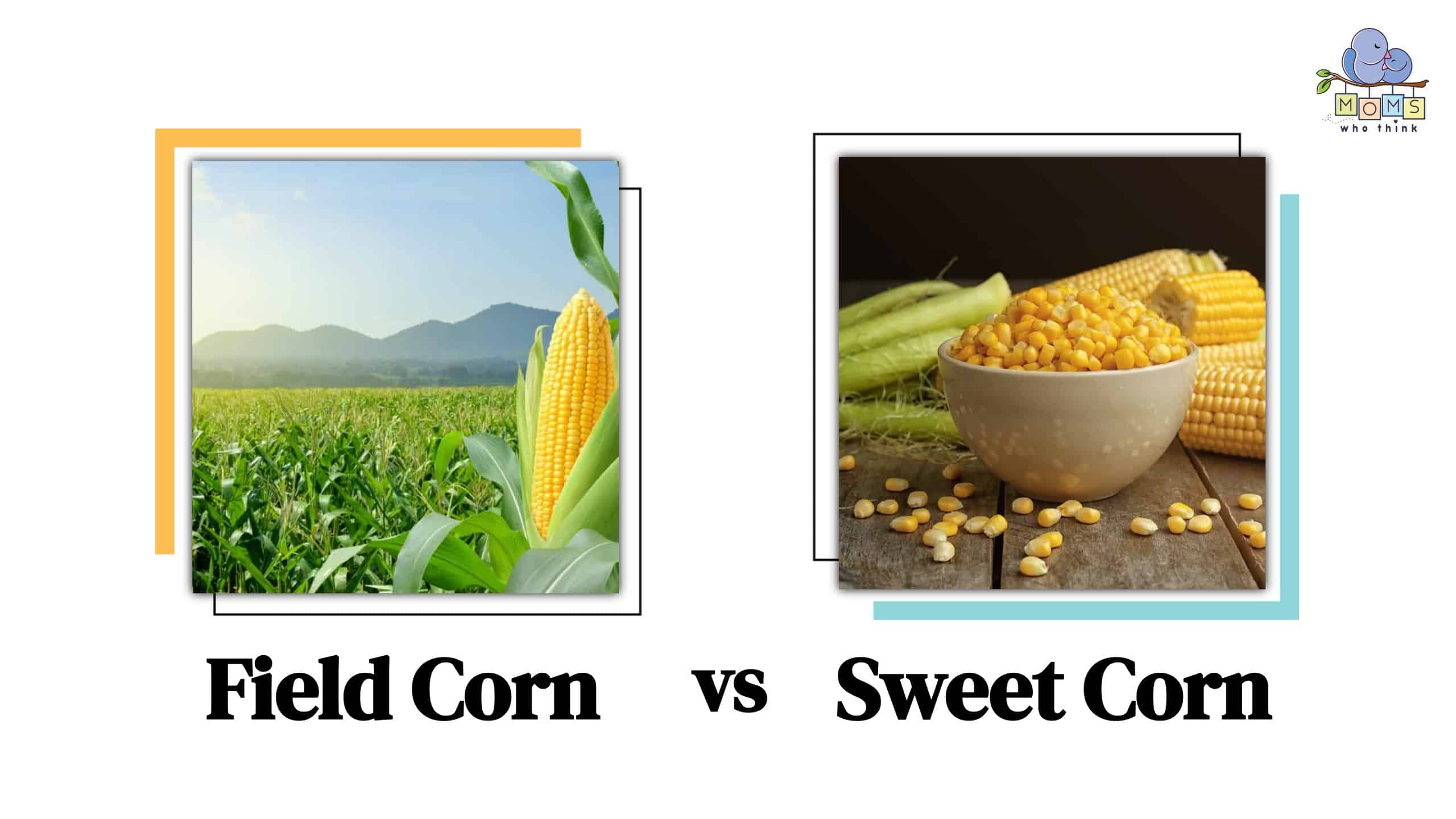Driving through a flyover state such as Indiana, Iowa, or Illinois, you will see never-ending fields of corn scattered throughout. Corn is one of the most popular cereal grains in the world. Although there are several corn varieties, this article will explore the difference between field and sweet corn. The difference lies in the uses, texture, flavor, and, most importantly, the kernels.
Field Corn vs. Sweet: What are the Differences?
From the corn that livestock eat to the delicious grilled corn on the dinner table, it can be confusing to know the actual differences. However similar they may be, field corn and sweet corn are not the same. Let's take a look at some of the key differences below.
Kernels: The Essence of the Corn
When we think of corn, we automatically picture the yellow kernels that are sweet and soft. However, one of the main differences between field corn and sweet corn lies in those delicious kernels.
With sweet corn, the kernels are soft. They are sweet and also have a longer shelf life than field corn. The kernels are bright yellow, picture the sun, a telling characteristic that sets them apart.
On the other hand, field corn has many different kernels. Appearance-wise, the kernels are usually more orange than the sweet corn kernels. This is because harvesting does not happen until the field corn is fully mature. Field corn kernels also have a hard outer shell. They are not sweet. Field corn kernels are very starchy; the starch is in both the inside and outside of the kernel. These characteristics make the field corn unsuitable for human consumption straight from the fields.
- The must-have convenient reference guide for every home cook!
- Includes more than 8,000 substitutions for ingredients, cookware, and techniques.
- Save time and money on by avoiding trips to grab that "missing" ingredient you don't really need.
What Are the Uses?
Another difference lies in the specific uses for each type of corn. Field corn has a few uses. However, the main one is to feed livestock. Field corn can also be a base for many corn products, including corn tortillas and chips. More uses for field corn are as a sugar substrate and to make plastic!
On the other hand, sweet corn has been explicitly mutated for human consumption. The sweetness adds to hardy weeknight dinners. Sweet corn is versatile and can be grilled, baked, and even boiled. There are many different ways to enjoy this delicious vegetable!
Texture and Flavor
The texture and flavor are another telling difference between these two types of corn.
Sweet corn has one of the main characteristics in the name. It is sweet and also delicate and buttery. Some types of sweet corn can be sweeter than others. Therefore, it can also have a starchy flavor.
Field corn is hard on the outside. It is not sweet, only starchy. Humans should not consume field corn raw; it needs to undergo processing or cooking before it becomes edible.
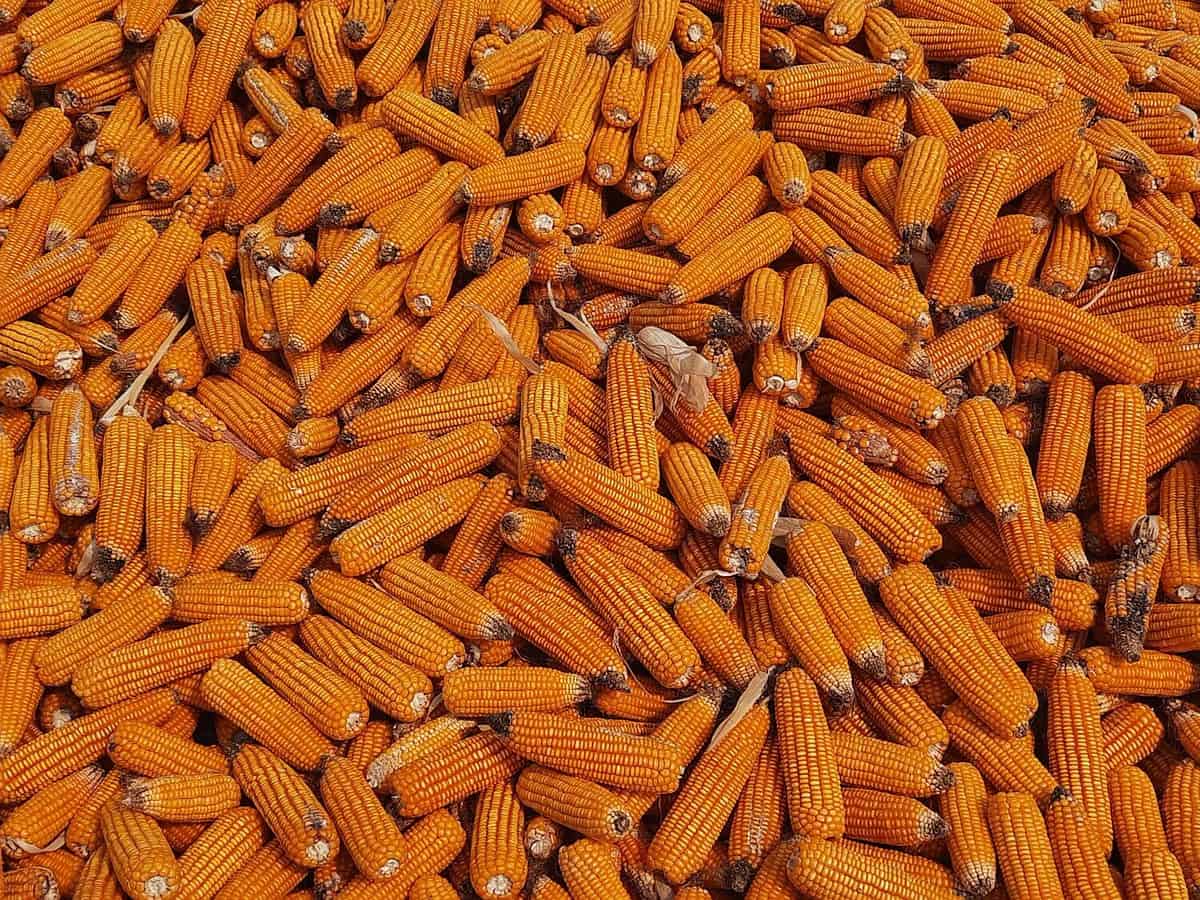
Field corn undergoes harvesting at complete maturity. The uses include animal feed and as a base for corn products.
©John Sarkar/Shutterstock.com
Field Corn vs. Sweet Corn Nutritional Value
When it comes to nutritional value, field corn, and sweet corn do differ a bit. Field corn is mainly starch. Therefore, carbohydrates and calories are higher than sweet corn. Look below at the differences in nutritional value for a more transparent snapshot.
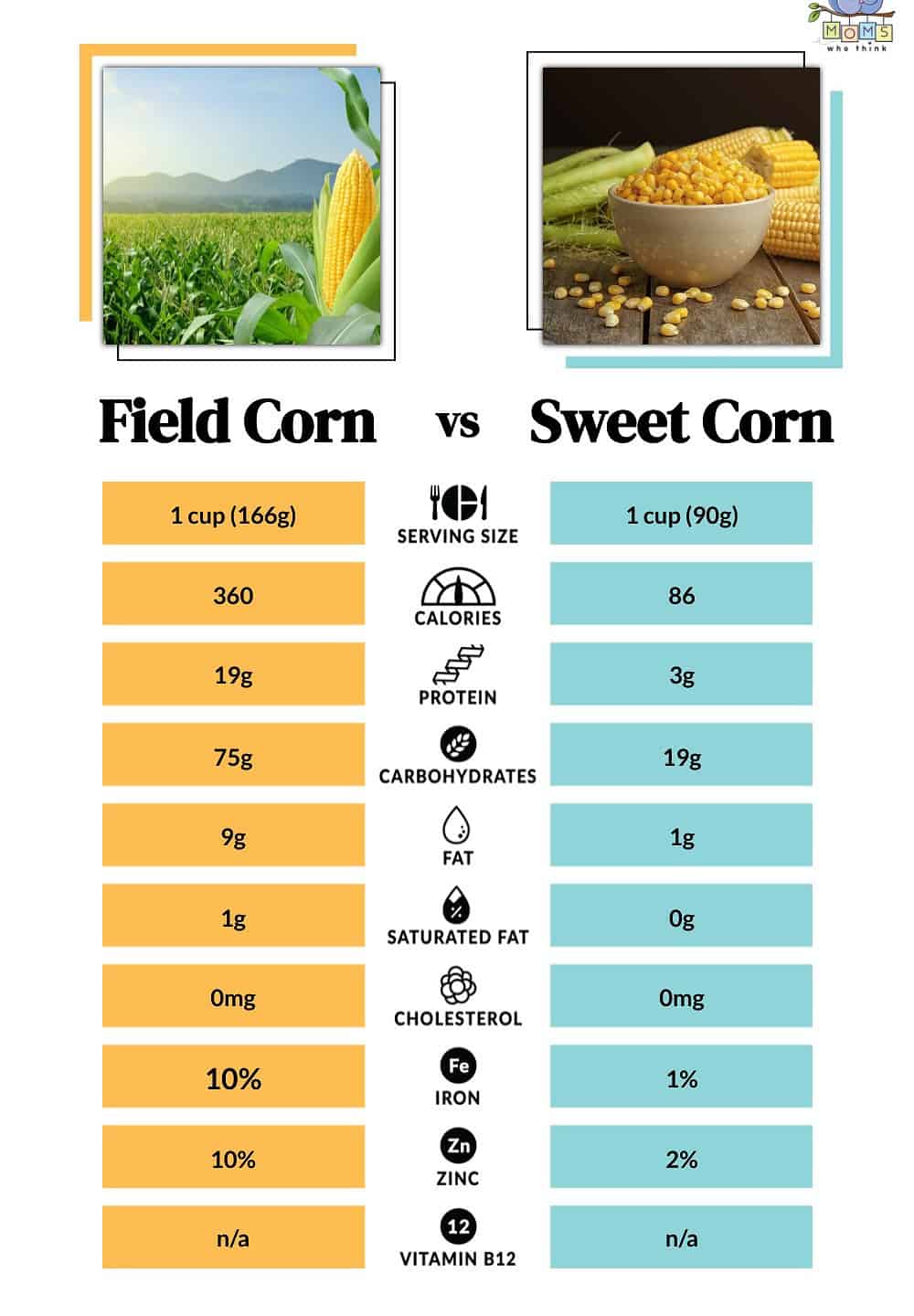
©
What is Field Corn?
Field corn can grow very tall, up to nine feet, and is most of the time specifically for feeding animals. These animals include cows, goats, and chickens. Although field corn is specifically for livestock, the overabundance means it's also great for a few more uses. These uses include food products, corn starch, and ethanol products.
Field corn has a tough outer kernel shell. It goes by another name, dent corn. It has a slight indentation in the middle of the kernel. Also, field corn reach maturation before undergoing harvesting.
Field corn is very dry when it is mature. The dryness is what leads to the hard outer shell. Also, since field corn is fully mature, the appearance gives off an orange hue instead of the bright yellow many see with sweet corn.
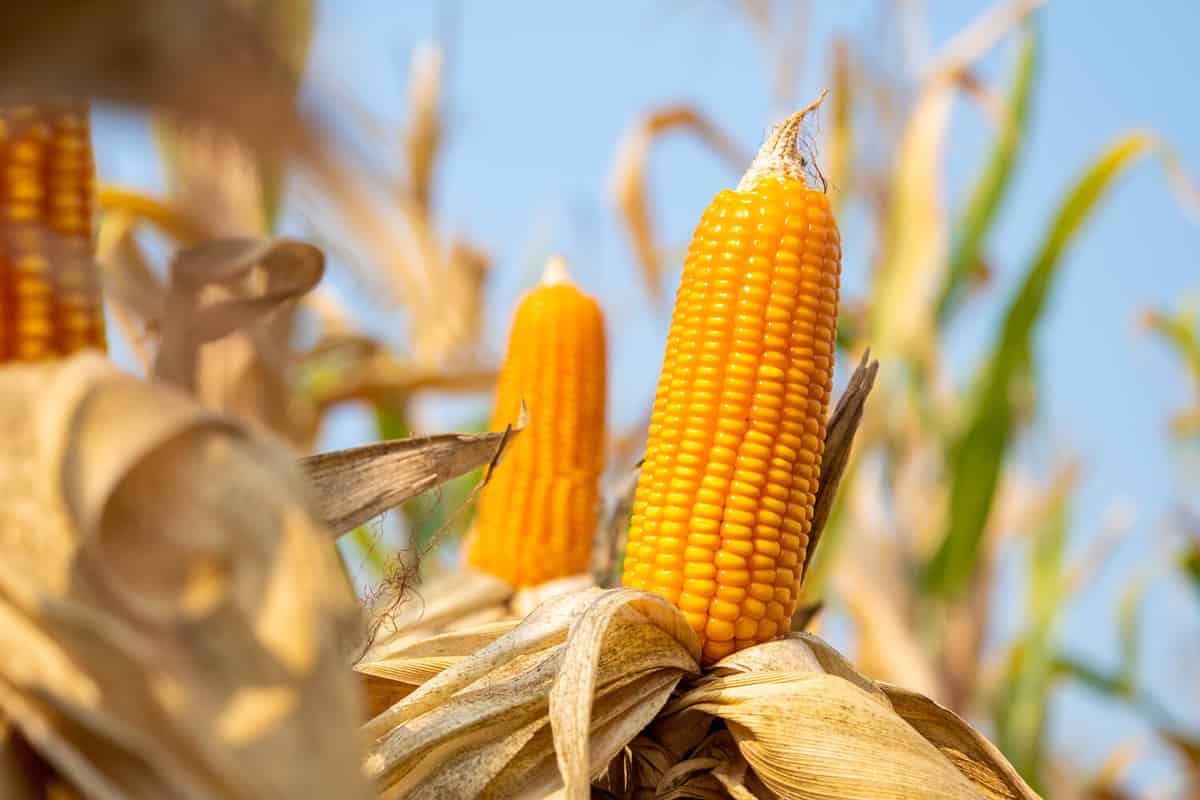
Field corn has a more orange appearance as it grows to maturity. It can grow very tall. Also, the kernels become dry and hard.
©Lamyai/Shutterstock.com
What Is Sweet Corn?
While field corn is typically grown for animal feed, sweet corn is a modified type. It has specifically been genetically made to be safe for human consumption. There are many types of sweet corn on the market today. Some are sweet with a short shelf life, some with mega sweetness and longer shelf life.
One of the reasons that sweet corn is so sweet is that it is harvested before it reaches maturity. The immature stage will produce a milky and sweet juice. When the corn has this juice, farmers know it is time to harvest it.
This mutated corn has an endosperm with more sugar than typical field corn. While the kernels are sweet, the sugar becomes starchy once harvested. This makes the corn lose some sweetness. For this reason, sweet corn doesn't have long shelf lives.
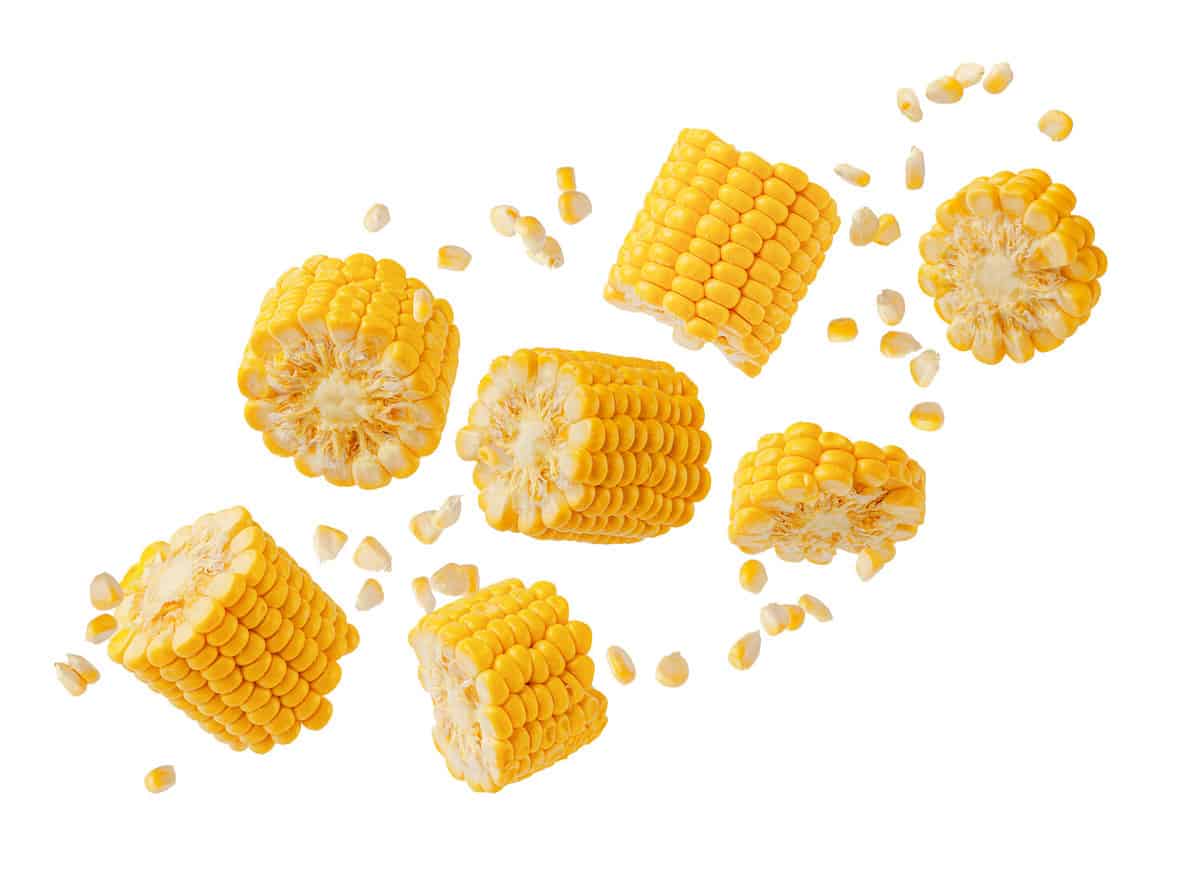
Sweet corn is specifically for humans to eat. The sweetness and softness make it a delectable treat for dinnertime.
©Tetiana Tychynska/Shutterstock.com
Can You Substitute Field Corn for Sweet Corn?
No, you cannot substitute field corn for sweet corn. For starters, field corn is not safe for human consumption while raw. While field corn is great for corn products, eating it in the same manner that we consume sweet corn is not typically safe. Of course, you can cook field corn, making it safer to eat. However, there is a different texture and flavor than sweet corn.
Sweet corn, on the other hand, is specifically for humans to enjoy. This makes eating raw or after cooking on the stove or grill safe.
Benefits of Corn
Corn is often labeled as having no nutritional value. While this is partially true, our bodies do have trouble breaking down the outer shell of the corn, don't discount corn completely.
Corn does offer a few benefits for our health. These benefits include:
- The must-have convenient reference guide for every home cook!
- Includes more than 8,000 substitutions for ingredients, cookware, and techniques.
- Save time and money on by avoiding trips to grab that "missing" ingredient you don't really need.
- Fiber
- Protein
- Antioxidants
- Minerals
- Possibly beneficial for digestive health
- Possibly beneficial for eye health
Therefore, enjoy that corn on the cob! It is tasty and does offer some health benefits. However, corn is primarily carbohydrates, meaning it's best in moderation.
One Last Note
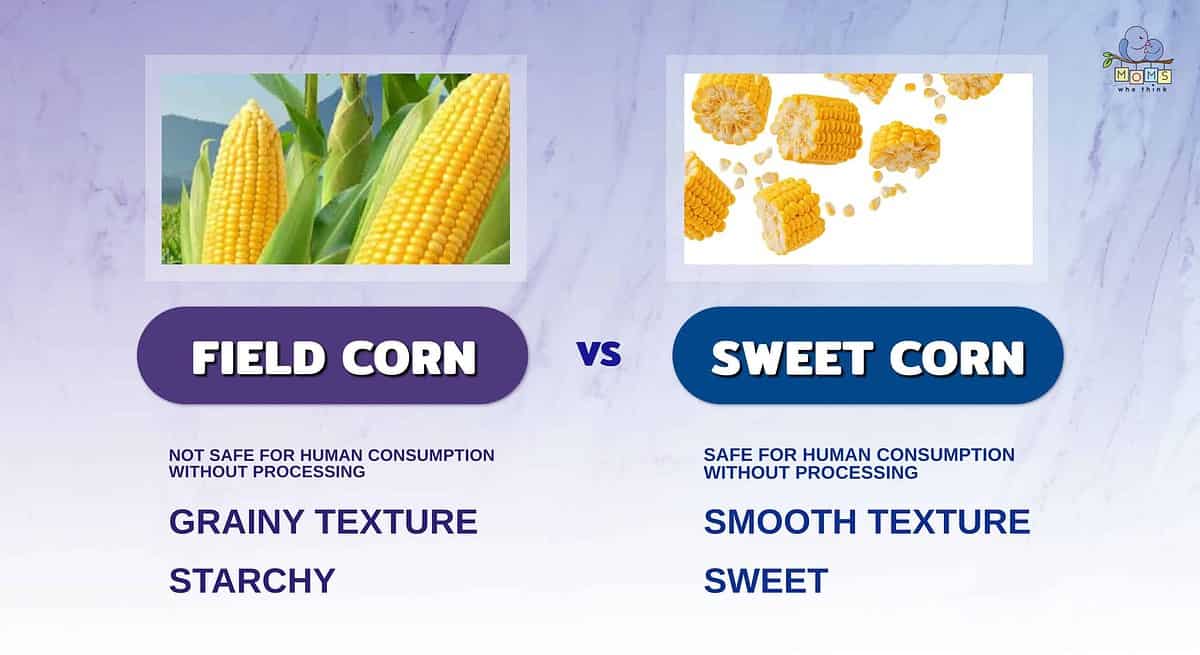
- Field corn isn't made for human consumption out of the field but is often used as cornmeal or animal feed.
- Sweet corn can be cooked in a limitless number of ways.
- While sweet corn isn't the most nutritious food there are still important nutrients.
Corn is a staple across many homes. The many different varieties may make it difficult to know which is best for your dinner table. A few differences set them apart when it comes to field corn and sweet corn. Field corn is not specifically for humans to consume. The main reason field corn is raised is for livestock. However, it can also be found in corn products after processing.
On the other hand, sweet corn has been specifically modified for humans to enjoy. It is sweet, soft, and easy to eat. Whether you enjoy grilling it and then slathering sweet corn with butter or tossing it on a salad, there are many delicious ways to eat this product!
Regardless if you enjoy sweet corn in all its glorious deliciousness or a bowl of corn tortillas, there's no getting around it. Corn really is one of the most popular cereal grains and has many uses, from food to sugar. It is no wonder growing corn is so popular in states like Illinois, Iowa, Indiana, and many more!
Check this great recipe out that uses sweet corn:
Print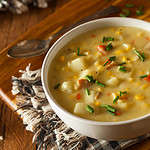
Fresh Corn Chowder
Ingredients
2 sticks butter
4 bacon slices, chopped
2 cups finely diced onion
12 ears of fresh sweet corn, kernels removed
4 minced garlic cloves
3 quarts chicken broth
1 teaspoon red pepper flakes
1 quart light cream
1 cup flour
1 cup finely diced celery
1 teaspoon dried thyme
4 cups diced Yukon Gold potatoes, cooked and drained
Salt & pepper to taste
Instructions
1. In a large stock pot, melt one stick (8 Tablespoons butter), and cook the bacon on high heat until crispy.
2. Remove pot from heat and remove bacon. Drain bacon on a plate, set aside.
3. Add the onions to butter and bacon fat and cook until lightly browned (about 10 minutes).
4. Stir in 1/2 the corn and cook for about 5 minutes.
5. Add garlic, then the chicken stock and red pepper flakes, and bring to a boil.
6. In another pot bring the cream just to a boil and add to corn mixture.
7. Cook for 5 minutes on medium heat, then remove the creamy corn mixture from heat and set aside. Allow to cool 15-20 minutes.
8. In a small pot melt the remaining butter and whisk in the flour over low heat. Whisk continuously for 5 minutes.
9. In a sauté pan, cook the remaining corn, celery, and thyme in a little oil for about 5 minutes.
10. Add the butter and flour mixture to the corn celery thyme mixture, stirring constantly until it comes to a boil.
11. Add this mixture and the cooked diced potatoes to the cooled creamy corn mixture. Mix well and season with salt and pepper to taste.
Corn Posts
- White Corn vs. Yellow Corn: Is One Sweeter Than the Other?
- Grits vs. Polenta vs. Cornmeal: A Grainy Showdown
- Corn Starch vs. Flour: The Main Differences Between Two Baking Staples
- Cornmeal vs Corn Flour: Key Differences, Nutritional Value, Usage, Replaceability
- Corn Oil vs. Canola Oil: Key Differences & Which is Healthier
